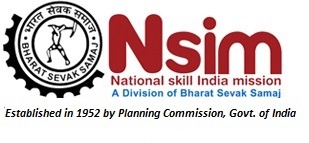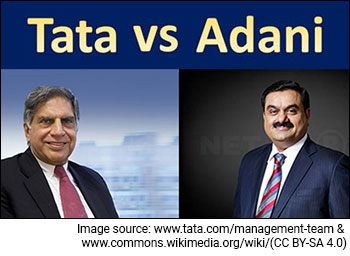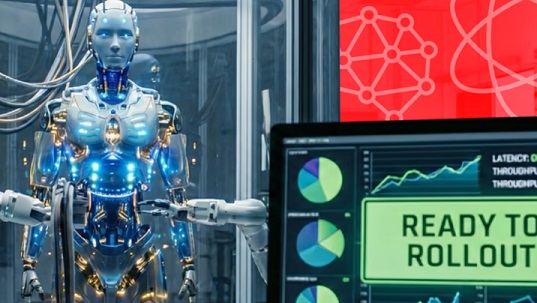Stories you may like
THE SOLAR WAR: ADANI’S AGGRESSIVE HYPE VS. TATA’S TRUSTWORTHY LEGACY – CHOOSE WISELY!
Which solar panel should you install in your home, Adani Topcon Solar or Tata Solar? This is the question that my clients ask before I execute the design and site work for domestic rooftop customers. Most of them are bedazzled with going ahead with India’s self-proclaimed crony capitalist like modern East India Company; the propaganda is just like the adopted media. They don’t get the correct direction. However, in this article, your search is going to end because I will tell you which solar panel is the best for your needs and why.
Most of my residential clients are from middle-class families, I would say 80% of them and remaining are small scale/medium scale business family people. Most of such customers are often duped by vendors, or acquaintances for having the Solar Panels from modern East India Company as they get their cuit if you buy it from them.
On the right hand (like a “right-wing” people), there’s Adani Topcon’s aggressive push like anything, and on the other hand, there’s Tata’s trust. So, which solar panel should you install? In this article, I am going to answer this very question so that in the end, you can understand which of the two solar panels is best for you. So, make sure to read the article till the end. Let’s move forward.
First, let’s understand both panels, their pros and cons. After that, we will compare the two, and at the end, we will understand which solar panel I recommend and why I chose it. So, let’s first talk about Tata Solar. Tata Solar offers both Topcon and Mono PERC Bifacial panels in the market. But if you want to avail government subsidies, meaning you need to install DCR panels, you cannot install Tata’s Topcon panels because they are not available in DCR. For that, you will have to install Mono PERC Bifacial panels. Talking about Tata’s DCR Mono PERC Bifacial panels, I will show you two PDF files in comments section separately which you can read through the details very carefully for both these specifications and tell me what difference you notice between them besides the name. It’s possible that you may not notice any difference, but if you do, then congratulations, half of your work is done.
If you’re not able to figure it out, no worries. I’ll tell you that there is one major difference between the two slides. I’ll explain how vendors and companies can confuse you. Both panels range from 570 to 600 watts. One panel uses glass-to-glass technology, where you get glass on both the front and back. The other panel uses glass-to-transparent backsheet technology, where you get glass on one side and a transparent sheet, called a backsheet, on the other side. If we talk about their efficiency, both panels have an efficiency of 21.54%. The voltage, current, and everything else you get are the same. But the main difference becomes apparent when you look at the degradation sheet or degradation chart. Here, you will see that the glass-to-glass panel works at 80% after 30 years. This means it will take 30 years for that panel to lose 20% of its performance. However, the glass-to-transparent backsheet panel reaches 80% in just 25 years. This 5-year difference is something you won’t understand unless you check the datasheet or the model number, and no one will tell you about it.
So, if you take my advice, the glass-to-glass panel is more beneficial because the 5-year difference you see makes a significant impact. It may seem small, but it creates a big difference when you calculate production over the long term. If we talk about Tata’s efficiency, both panels come with 21.54% efficiency. In terms of service network, Tata provides excellent service all over India. No doubt, Tata is a symbol of trust, as everyone knows. Everything else you get with the panel is great. You get a 12-year performance warranty, and one panel comes with a 30-year warranty, while the other comes with a 25-year warranty. There’s not much difference between the two panels. If I talk about pricing, both panels will cost you around ₹20 to ₹25 per watt. So, instead of saving, if we opt for a good panel, it provides benefits in the long term.
Now let’s talk about Adani Solar. With Adani, you get both Topcon and Mono PERC panels available as DCR panels. You can purchase either of them or avail government subsidies. If you want to go for non-DCR panels, Tata also has non-DCR Topcon panels available, but they are mostly used commercially. For now, let’s talk about Adani’s Topcon series. Adani has launched a series called Elan Shine in their Topcon panels, which includes two panels: one with P-type cells and the other with N-type cells. I am providing PDF files in the comments.
If you look at them, just like we compared Tata’s panels, everything else in both panels is the same. But if we talk about yearly degradation, Adani’s P-type cell panel has a degradation of 84.95% after 30 years, and for the N-type cell, you get a degradation of 87.4%, which is 7% better than Tata. This is the reason why the vendors and their associates are pushing consumers to choose Adani over Tata, and why Adani provides more production. The degradation, meaning how much the panel’s capacity decreases each year, is lower in Adani compared to Tata, which is why Adani claims that their panels perform better in the long term. But here is the catch that most of the people gets fooled, they are mainly from the right-wing influence. Remember one thing, when they claimed such “better efficiency” compared to others, especially Tata Solar, there are not enough proofs of such efficiency that is going to take place after 30 years. All these are laboratory claims and often changes due to practical site, weather conditions and other allied equipments associated with the Solar Panel system. Efficiency just not varies according to how clean is the surface and how the sun rays are pointed towards panel, the direction, the angle but there are lot many other technical aspects which I will not cover this article but you may read my previous ones wherein I have mentioned about it.
Talking about other aspects of both panels, the P-type cell ranges from 525 watts to 550 watts, while the N-type cell is available from 550 watts to 580 watts in the market. In terms of efficiency, the P-type cell’s efficiency is between 20% and 21%, while the N-type cell’s efficiency goes up to 22.5%, which is the best in the market. In the comparison I did, Adani’s N-type cell performs better than the P-type cell. So, when you’re purchasing a cell, make sure to check the model number. So, overall, the N-type cell is better to purchase.
Now, here is another cunningness, there is a difference in overall quality of N-type cell being manufactured in India compared to that of China, especially there is a huge difference if the N-type cell is from China and from other Asian countries. Their quality and efficiency between inhouse produced one and imported from China.
Regarding warranty, Adani’s warranty is moderate across India. It’s not that you won’t get it, but it can be a bit time-consuming because they have fewer local vendors compared to Tata, which has a stronger and older network. Speaking of warranty, you get a 12-year product warranty and a 30-year performance warranty from Adani. If we do a head-to-head comparison between Tata and Adani, in terms of technology, Tata offers Mono PERC technology, while Adani offers advanced Topcon technology. In terms of efficiency, Tata gives you 21.54% efficiency, but Adani gives you 22.5% efficiency.
If we talk about pricing, Tata’s panels will cost you between ₹20 and ₹25 per watt, while Adani’s panels cost around ₹25 to ₹30 per watt. Regarding warranty, you get 12 years and 30 years for both Tata and Adani. In terms of power degradation, after 30 years, Tata’s panels retain 80% power, meaning the panel works at 80% efficiency. Now, you would say, how come I am affirmative about Tata’s Solar panel claim? The reason is that I have witnessed it in practical scenarios for last 20 years when I was started as a Tata BP Solar and the panels installed since last 20-25 years still function with the claimed efficiency. Though Adani retains around 87% power, which is significantly higher than Tata, I would say that it is still unproven at any of the sites in India. In terms of service network, Tata has a strong service network, while Adani’s is not as strong, but they are improving it.
If I talk about who Tata and Adani are best for, Tata is best for those who want to go with a trustworthy brand and plan a tension-free system. Adani is ok for “right” enthusiasts who think that they will produce more energy in less time and recover their return on investment (ROI) as quickly as possible. To conclude which one is the best and which is best for you, if you want to go with the best technology and earn more money in less time by selling your energy or recovering your investment quickly, Adani is the ok for you as it is just like Rs. 15 lakh Jumla and yet to be proved. But if you want a budget-friendly and reliable brand, Tata is the best for you. Let me know in the comment section which one you are planning to choose—Adani or Tata.
You will still get poor service from Adani as their network of vendors is still poor. But just like the “out of the way” they are aggressively expanding vendors and associates. There is a directive from PMO to each of the States CMs wherein they are ruling in majority that the Chief Minister and Energy Minister should handover the detailed data base of all HT and EHT consumers including open access to Adani renewable energy which should have the contact number of the person, email address, postal address, their monthly bill amount, their connected load, contract demand, monthly average consumption and demand history for last 12 months. Since Mr. Devendra Fadnavis is not only the Chief Minister of Maharashtra, he is also the Home Minister and more importantly the Energy Minister of Maharashtra. No wonder, that MSEDCL director was pressurized to share the details with Adani renewable energy. Post this, they aggressively started calling all the HT consumers in all States where BJP rules and sent out emails to all such prospective consumers. Many of the consumers in Hinjewadi, Wakad, Pimpri Chinchwad area have got the email below, you may see the screenshot of below email wherein they shared the pamphlet information via attachment. I have removed the identity of the client as requested by them.
Surprisingly, in a hurried way, even Tata Motors and Mahindra Automotive Industries also got this kind of email. Do you think it is an ethical way of grabbing the business share? Imagine where would have been Tata Power or Tata Solar; had they followed such malpractices. Why would Tata or Mahindra buy the services from their competitor when they have their own space in Solar market? Ultimately the choice is yours!






User's Comments
No comments there.